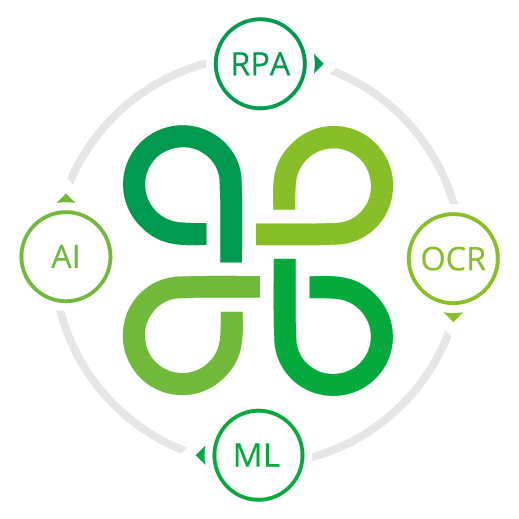Document UnderstandinG (DU)
Process Documents in Any Format Using the Power of Intelligent Automation and Artificial Intelligence
Digital paperwork may eliminate physical documents, but it still requires manual work to extract, interpret, validate, and process. It’s a tedious but necessary workflow for many enterprise functions. Document Understanding (DU) provides a more efficient and accurate way to process any document in any format.
Convinced and ready to get started on your automation journey?
What Is Document Understanding, and How Does It Work?
Document Understanding is the process of using software robots to automate the reading and understanding of documents.
It can mimic the same steps humans would take to review, input, or manage data. The data can be structured, unstructured, or semi-structured, from handwritten notes to PDFs. Most organizations’ data fall into the categories of having little to no structure. With these assets, deeper training is necessary for Machine Learning models, a process at which our experts excel.
Merging Robotic Process Automation, Artificial Intelligence, and Machine Learning to Process All Documents
Document Understanding combines Robotic Process Automation (RPA), Artificial Intelligence (AI), and Machine Learning (ML). The concept teaches software robots to reliably organize and identify data, classify documents, and export information.
The first step to document understanding is applying Optical Character Recognition (OCR) technology. This action converts the document into raw text. Models can then learn against the extracts to retrieve data with high accuracy.
Next, the RPA, AI, and ML components continue the concept. Pre-trained Machine Learning models are the first part of this automation journey. Bots that link to the models have AI capabilities.
As a result of this intelligent workflow, you can automate end-to-end document processing with little human intervention required. Employees will only need to validate certain data types or handle exceptions.


What Can You Process with Document Understanding?
You can process so many kinds of documents with this technology. Unstructured or semi-structured data once created challenges for automation, but AI and Machine Learning have changed the possibilities.
Document Understanding can apply to a variety of activities throughout an enterprise. Here are key use cases for Document Understanding:
- Use pre-built or custom models to build end-to-end workflows
- Extract data based on rules, anchors, or intelligent templates with no-code AI
- Send extracted data key fields downstream into applications or databases
- Augment robots with human validation when they flag something, triggering a notification
- Analyze documents for specific content
- Automate any document-heavy workflow
- Perform high-volume processing with little need for monitoring
 What Are the Benefits of Document Understanding?
What Are the Benefits of Document Understanding?
Your organization can realize many advantages by adopting this technology. It reinvents workflows that keep your team from being productive, which can deliver positive benefits for all. Here are just some of the potential benefits:
- Reduce errors that are inevitable in manual processing
- Lower costs associated with document processing
- Decrease the time spent on these tasks, with workers only needing to validate a small set
- Improve compliance and risk management when processing documents with personal information
- Drive more meaningful work experiences for professionals who are no longer burdened by mundane tasks
- Leverage data more effectively, as document processing aggregates it and places it in new formats
Standardize and simplify processes to remove barriers to efficiency
All these advantages are within reach when you understand each process and leverage automation to improve them. When you get to this state, you’re more likely to hit operational efficiency objectives.
Document Understanding in Action
Automation Resources Hub
Downloadable Resources
Guides, eBooks, Infographics, White Papers, and Case Studies
Webinars
Browse by live and on-demand webinars across a wide variety of IA topics
Thought Leadership Articles
Your source for RPA and Hyperautomation thought leadership and education



